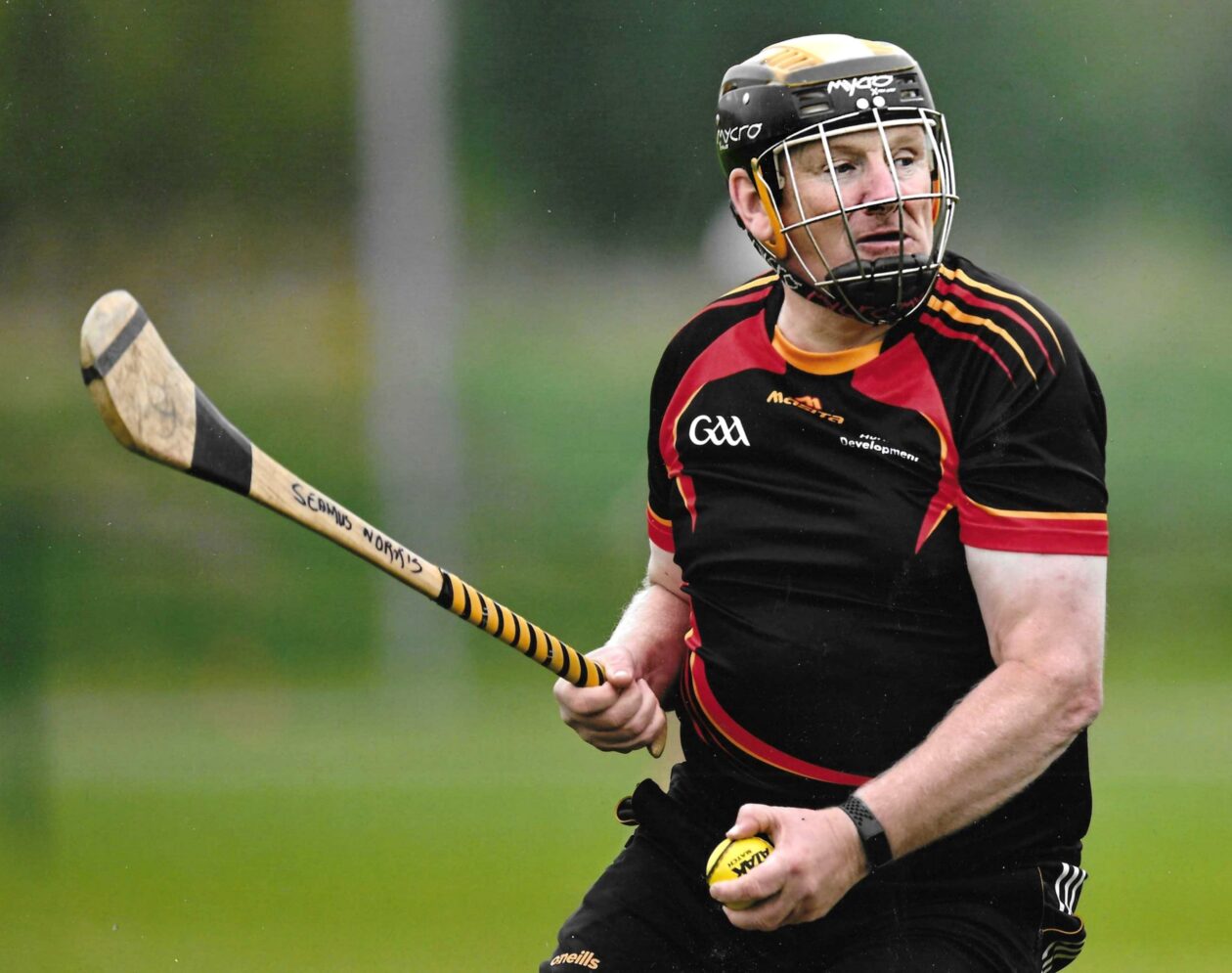Like everything, change is constant. The professional world of Information Technology that I work in, is a prime example. So, to is one of my hobbies, the GAA. For me it is a hobby. Something that provides huge enjoyment in many different ways, without any financial profit. In fact, it costs me money, but I have no issue given the entertainment and fulfilment I receive in return even if it does include disappointments of defeat and failed ambitions. The setbacks just make the good days even greater to savour. The games and the organisation are constantly evolving and always did. Some I love and I some don’t, no different to any individual. I am a traditionalist but one that is well aware change will always happen and is needed for evolution and sustainability.
Here’s a thought on change readers might consider. How do you imagine the GAA of the future will look?… Will it become a professional game, not just at inter county but also club level? Will Artificial Intelligence (AI) have an effect? Will the game, the structures, the competitions have any resemblance to what we have at the moment? Sometimes, it’s by looking back, you can visualise the potential for the future. In this blog I will try to contextualise the potential of the future in some respects, though the full discussion is only limited by the scope of the mind.
One time, the GAA was a voluntary hobby for almost everyone involved. Those days are changing with many now making their living from the GAA. It is estimated that over 1,700 people are directly employed by the GAA, LGFA and Camogie Association. According to the latest figures from the Gaelic Players Association (GPA), approximately 4,000 inter-county players — both male and female — currently receive government grants through the GPA scheme. Then there are the many managers, both inter county and club that receive “unofficial” payments. Of course, don’t forget the referees, who undoubtedly earn every cent they make. We are talking thousands collecting income directly as a result of GAA activities and many more indirectly, not to mention the merchandising companies and sponsors who benefit from high level exposure.
This is a far cry from the GAA that I grew up with in the 1970’s and 1980’s. Mind you I do recall envisaging a situation where there would be a single team manager similar to managers in English soccer. Remember these were the latter days of “selection committees”. I remember even at a young age feeling, someone needed to take overall responsibility. To be fair, I’m not sure, I thought of them being anything more than a volunteer. In the intervening forty years, the manager or Bainisteoir has become a genuine thing. Payments? We are not naïve. Maybe like the referees they deserve it for the amount of abuse they get particularly online.
Back then, I like most young aspiring GAA kids, imagined playing in All-Ireland finals in front of massive crowds. I suppose this was one area where I developed my imagination for another hobby, that of fictional writing. If we are honest, in the 70’s and 80’s we imagined ourselves on television as televised GAA games were becoming more common at inter-county level. You mostly pictured yourself winning the All-Ireland Final, hurling or football or maybe both, in some cases, for your county in Croke Park. However, I’m not sure how many were like me, imagined club games on the television! I probably realised I hadn’t the required talent to make it at inter-county level despite the ongoing dream and decided glory with the club would be just as important and probably more attainable for most average players. I imagined myself playing a major match for Windgap, my club at that time, in Piltown, the number one pitch in Kilkenny outside of Nowlan Park, I felt even back then. Often it was against Piltown in a local derby, knowing many of the opposition personally, it was easy to imagine. I would picture thousands on the banks shouting, singing and waving flags like at the televised soccer matches of that time. The commentator getting excited every time, I got on the ball as the cameras zoom in. Even down to the post match interview. There were so many people at the match, in hindsight, one would wonder who was left to view the match. There are surely hurling fans in Leitrim and Sligo that would love to watch Windgap and Piltown in a local derby. Aren’t they?
Anyway, at the time, the televising of a local club match followed by interviews seemed very far-fetched. Fast forward forty years or so. It is becoming the norm. First it was radio. In Kilkenny we have KCLR and the radio station that I had the privilege of covering Kilkenny junior matches with this year, CRKC, run by brilliantly enthusiastic GAA volunteers. Club matches brought to peoples home by passionate and knowledgeable local GAA people. In the last couple of years, the visual media has joined with Clubber covering many club matches around the country. People who could have read my mind 40+ years would have thought I was completely mad visualising such a scenario. The truth is, it has come to pass although the crowds I imagined are not there.
In 2001, I wrote a short play for the Slatequarry Festival in Windgap. Unfortunately, due to circumstances beyond my control, it never was performed. It was called “A Hurlers Tale” (Click Link to read) and featured three named but not identified, Windgap hurlers. One from the 1951, one from the present (2001) and one from the future, 2051. The past and the present are factual. The future was my visualisation at that time. It was an attempt to compare the life of a hurler from three different generations in a somewhat humorous way. The future was purely based on the limits of my imagination. It’s worth a read for subsequent context. Maybe the portrayal of the future is not all that far-fetched, considering where we are now.
Who would have thought that I was predicting illuminous yellow balls long before they came into vogue in 2020! Didn’t have to wait until 2051. Even the plastic hurl in anticipation of the Ash Dieback. Possibly Tullahought may not be the venue for the super stadium but incredibly I predicted Sky’s entry to the televised GAA market in 2014 amongst other notable predictions which appear to be evolving! Check it out in the play script.
The point is, that a fully professional GAA is not that far-fetched based on where the organisation has come from, even over the last half a century. The payment value could easily climb based on inflation and media investment and the entertainment provided. “Squid Games” and “Hunger Games” might be somewhat fanciful, but GAA games not so much. We can clearly see the influence and the want of people and business to invest in sports people and teams of many types. Recently listening to one radio sports bulletin, every item included was money related, be it salary, transfer fees, prize money or sponsorship value. It caught my attention when I thought back. The actual games were secondary.
What will the by-products be? Club amalgamation is one strong possibility as clubs consolidate their own resources. No way would Piltown and Windgap or Piltown and Mooncoin join together! Great historic rivals! Are you sure? Rural depopulation is happening. In addition, is the end of parish rule in sight? The basis of parish rule was based on Catholic Parish boundaries. Already around the country, Catholic parishes are amalgamating to form Pastoral Areas. The Diocese of Ossory now has 13 pastoral areas. Piltown, Kilmacow and Mooncoin are a single pastoral area. The tradition on which parish rule is based on, is dying out before our eyes. Will this lead to super clubs like before parish rule was introduced. Most likely. The top players will most likely be snapped up by the richer clubs like in the world of professional soccer. Not a hope in the GAA, I hear you say, Yet already there have been a number of very high-profile cases in recent times where top inter-county players have left their own club and joined the strongest club in another county or province. It’s not that unheard of already.
The job of the GAA hierarchy or Croke Park as it is often referred to, is to make money. They are a large business with huge assets and resources. The executive of any business is there to ensure business and profit growth. Most likely increasing their own pay packet. Can you blame them? What makes them different to any other business? They don’t deserve to be judged any different. Everything is done to a professional standard, so it is not absurd to think that more and more of the organisation will become professional by degrees as the business expands.
Artificial Intelligence is becoming a challenge to many walks of life and occupations. However, currently there is no sign of it replacing sports people, though it can be used to help improve their performance. At present AI, is more suited to repetitive and structured roles rather than non-repetitive physical tasks. As certain jobs for humans are replaced by AI, physical sport may be the opportunity for replacement employment in the future. The safety net for many where entertainment value is key to success. Many who would have looked into my mind 40 plus years ago, would have turned their nose up and laughed out loud at what I envisaged. They would not laugh so much now and I would reckon, the thoughts in this article would certainly annoy many traditional GAA folks. Yet, what I mention is slowly happening and once the tide starts coming in, it is very hard to stop it.
However, this creates a sales opportunity for the GAA and other sports organisations. It is particularly suited to the GAA as it is an organisation that prides itself on handing down our heritage and culture to the next generation. We all know about the benefits of physical sport from a health and wellbeing point of view. The future could potentially see a landscape where physical sport and the entertainment it provides, is an area where AI will not cross into for participation. Instead, it will offer employment and genuine career opportunities, which could potentially provide handsome renumeration, not just physical wellbeing. Why not sow the seeds for your children, grandchildren, great grandchildren of playing the games and providing your linage with a love of a game that will potentially survive for centuries. A legacy of enjoyment, entertainment with massive health and wellbeing benefits. Keeping your offspring interested and involved in the GAA or any sport is a priceless heirloom. Making sure your own club or county is ready for the potential changes that could happen over the next four or five decades is essential. Starting the discussion locally, is key. There is plenty of time… Or is there?
Close your eyes and visualise the future of the GAA in your own mind. Base it on past experiences of how far it has come in a relatively short time. Can you visualise your descendants enjoying the fruits of Gaelic Games participation, thanks to your foresight? If the vision is similar to mine, they will appreciate it. Give your children a genuine love of the games. It could be just as valuable to their future as their involvement is for the GAA itself.


